Up Close with Arts Entrepreneurs: On the Boards TV
Big Ideas | Tips and Tools | Arts Business | Artists and Members
by Jason Tseng, Community Engagement Specialist at Fractured Atlas
On the Boards TV was recently named a 2015 Arts Entrepreneurship Awards honoree for their pioneering work in providing high definition video content to the contemporary performance world. On top of that their business model shares half of its profits directly with the artists. Project leads Lane Czaplinski and Monique Courcy sat down with us to talk about how they’re bringing contemporary performance into the Netflix age.

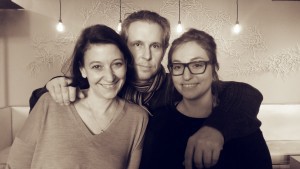
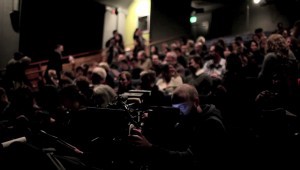
Well, I don’t think anything is particularly risky if no one is there to see it. If the New York Times writes a review about a show and only 600 people saw it at PS122 over the course of a run, I don’t think that makes for an interesting dialogue. Was it interesting work? Was it an intelligent work? Was the reviewer good? Do we agree with the reviewer? Right now OntheBoards.tv gives access to people regardless of where they live, how much money they have, and what their schedules are like. I think that makes it a more interesting proposition, as more can enter into the dialogue. Monique Courcy: I would also say that we add to the quality of the recording. We definitely went into this not wanting to just have one camera in the back of the house. It was really important for us to be able to work with professional filmmakers who knew what they were doing. We obviously weren’t in the film business in 2009 when we started this, and so we really needed someone who knew what they were doing and how to guide us through the process.
How do you select which artists to film? Is it just who is on your stage, or is it a more highly curated process?
LC: I’d like to think that what’s coming through our space is the result of a highly curated process. We host a lot of artists who don’t get to be seen broadly in the United States. I feel like providing access to that is a service in and of itself. After that we start looking at music rights and intellectual property rights. That’s actually a huge determiner. I actually wondered in the era of multimedia if it changes how artists make art — whether they think about different kinds of distribution strategies and whether or not they have the rights to them. And we’ve broadened into working with other partners like the Fusebox Festival in Austin. We’ll work with their programmers to figure out what we think is a win-win project in terms of providing access to an important artist, however we define that.
Many in the performing arts world are concerned with digital distribution and income cannibalization. How do you address those fears?
LC: I guess I have a lot of thoughts on that. For one, it adds an income stream to what is normally a pretty impoverished part of the arts world. We work in contemporary performance, so I’ll only speak to that. I think the notion of people not participating in the digital version of a performance because they think that it bastardizes it is silly. Do they not listen to recordings, or look at art in books, or online? We know that a Cézanne in an art catalog is not nearly interesting as seeing it in person, but if you want to have a particular access point then I think the recording is certainly good enough to continue a conversation.
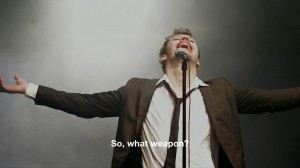
I see that it only builds enthusiasm and participation. I don’t see that it takes away from it. I also believe that contemporary performance in a larger way needs to enter into the educational system as a relevant kind of discourse that stretches across all kinds of critical theory and issues. And the only way it’s going to be able to do that is if people are able to see it and talk about it. Well right now we have 86 universities that use our performances in their curriculum. If performance isn’t contextualized and taught in universities it’s not going to be an ongoing concern going into the future.
Are there unique challenges?
Monique Courcy: It’s really not as challenging as you would think. What it really comes down to is when you’re setting up the film.Sometimes when we’re at a partner venue and there isn’t traditional audience seating and it’s a new venue we haven’t been to, it becomes challenging. In that case, we’ll need to work with a new set of technical people who are at the production house. Lighting sometimes can be very dark with contemporary performances. But we’re working with very skilled filmmakers who are familiar with how to approach these challenges. The challenges vary on a film-to-film basis, but it’s not so much about the type of performance. It’s about the set up and how to best capture it.
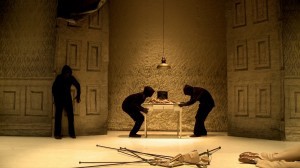
There’s a lot of excitement about virtual reality and the possibilities it has for storytelling and live performance. Have you explored any of that?
LC: That aspect of it, for us, represents a new phase of our work. Like with the art on our stages we try and have this be artist-led. It’s less of our interest in using that kind of new technology, and exploring that through television. If an artist was doing interesting work and wanted to incorporate that kind of technology, we’d be interested in that. We’re interested in the relationship between a dynamic filmmaker and dynamic young performance artist. In the first several years of the project, we generally wanted to be really good at making the same kind of product: feature length films. We were putting all of our resources into feature length films and getting as many titles as we could so that the experience the user was getting by clicking through our site would be essentially full-length films.
Can you talk to us about your business model? You share 50% of your profits with your artists. How did you come to that number, and was it a challenge at all to come do that decision?
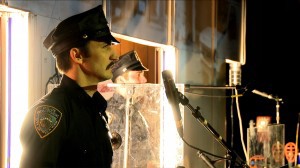
LC: Yeah, it kind of doesn’t make sense to give away half your profit, but it also kind of doesn’t make sense to run a nonprofit. At the outset of the project, we didn’t know if artists would participate or not. We were quite concerned about that and we didn’t know if we would make any revenue off of that, or what the income would be. And so, our thought was let’s go in as 50–50 partners. We approached artists saying we’re embarking on a new experiment and a new phase, and we don’t know what’s going to happen, but we’d love to be a partner with you. In good faith, if we make anything, we’ll give you half. That’s what we’ve been saying from the beginning and it’s amazing to see how artists have bought into that. I think the monetizing of it is really interesting. People always ask us “Why do you charge for your films?” Charging for our films has helped us have such a good relationship with the artist. Because they can see we’re not just filming their shows and trying to distribute without them. I think that sort of relationship would get into a cannibalization situation. We also really try to guard those relationships. Like, when we do screening of these films at different venues, we work with the venues and the artists to make sure that these screenings aren’t happening at a place or venue that could actually present the real show. Some artists also view it as a marketing opportunity saying, “That’s an old production, and I have a new production, so doing this screening might generate interest in bringing my new show to this venue in the future.”
Is there any artist that you haven’t had a chance to film that you want to work with?
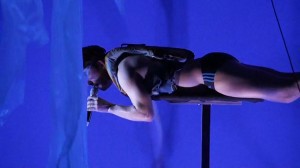
Just gazillions of them. I mean, really all of them. It actually makes me think about the bigger question of how you curate for the web. To be honest, it’s different. Let’s say that there’s a particular choreographer and I haven’t developed a relationship with that choreographer’s work, so maybe I don’t make the financial investment to invite them to Seattle to perform. But what’s interesting about OntheBoards.tv is that the economics can be liberating. Let’s say I had a partner organization who did have a relationship with that artist and their work, and we had an opportunity to film the artist’s show at that partner’s venue… I’d do that in a second. We can only do only so much with our resources. We’re interpreting our programming within a finite set of resources. As we have more resources to film performances for OntheBoards.tv, it opens up the programmatic perspective. Not unlike how writing online has opened up journalism: Instead of relying on a single theatre critic or a single performance critic. In many formats you get lots and lots of different voices weighing in on a particular issue. I think I’m seeing this starting to affect our curating. Especially as we’ve broadened out into other partner organizations.
About Fractured Atlas
Fiscal sponsor, fundraising platform, educational resource, advice from a staff of experienced artists & creatives. We’re rooting for you!

